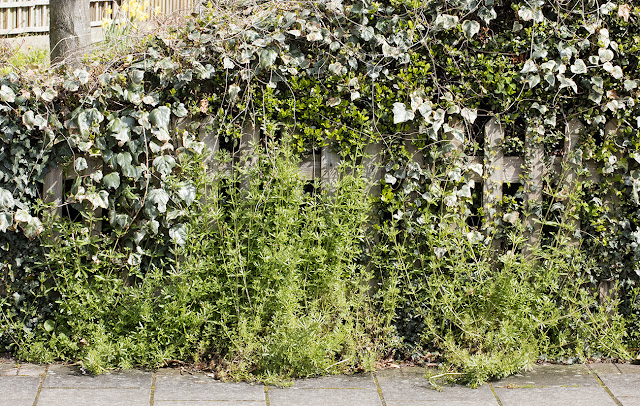 |
| Three-cornered Leek, Allium triquetrum. Hayes, 25 April 2016. |
Some plants just need a very little open ground to thrive. This Three-cornered Leek gets its name from the fleshy leaves, which are more or less triangular in cross-section. It's an invasive pest in woodlands but bright and cheerful in unregarded corners like this one.
It is edible in all parts and tastes garlicky. So this is one plant that no-one should feel guilty about foraging from the woods. But don't take it from places like this, because the chances are that dogs have peed on it.
 |
| Cleavers, Galium aparine. Tiepigs Lane, Hayes, 26 April 2016. |
Shoots of Cleavers appeared as interlopers in two photos in my last post. This is what it can do if given a little space to grow.
Some of these survivors will flower later in the year, and are already well on their way.
 |
| Purple Toadflax, Linaria purpurea. Hayes station, 10 April 2016. |
The edges of car parks are good places to look for these often unregarded plants. Purple Toadflax - no relation to the Ivy-leaved Toadflax in the last post - is quite happy under this fencing.
 |
| Common Mallow, Malva sylvestris. Hayes station, 10 April 2016. |
This Mallow doesn't need much space, either.
 |
| Petty Spurge, Euphorbia peplus. Tiepigs Lane, Hayes, 26 April 2016. |
Although it doesn't look it from afar, this Petty Spurge is in full flower. The flowers are small and green, a common feature of the Euphorbiaceae.
Next time I'll post just a couple more of the really tough ones.





No comments:
Post a Comment